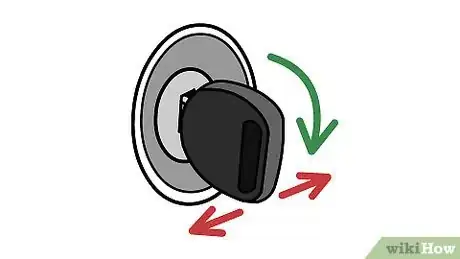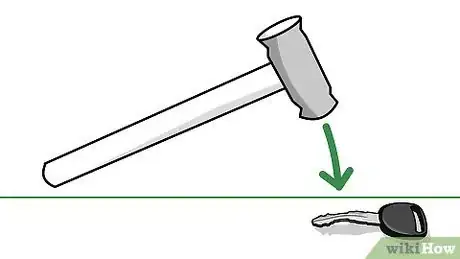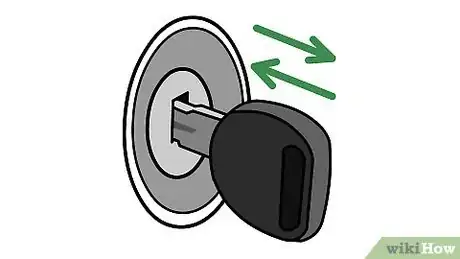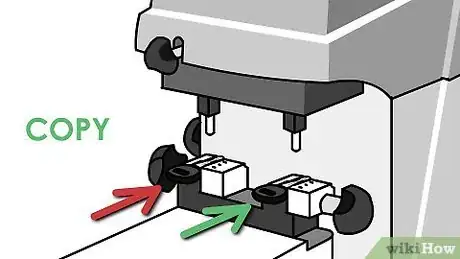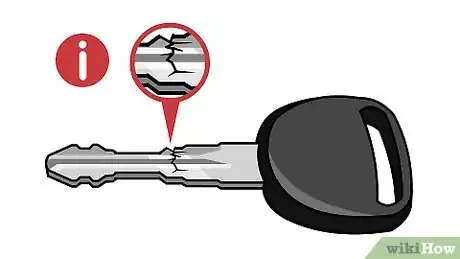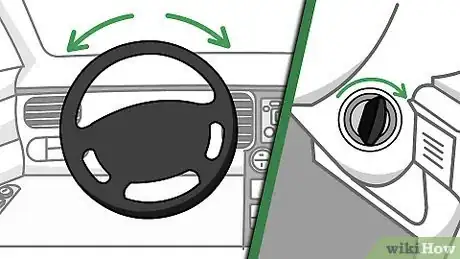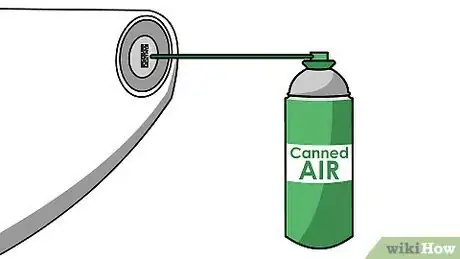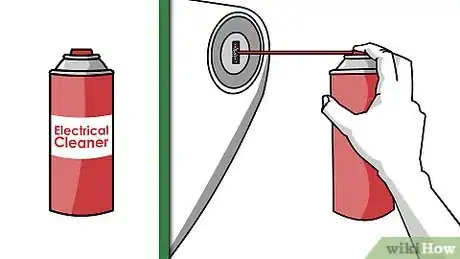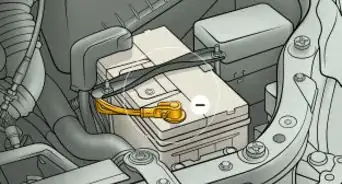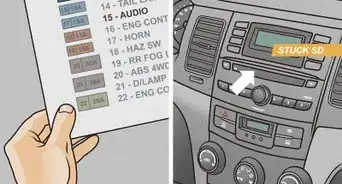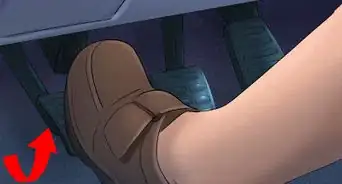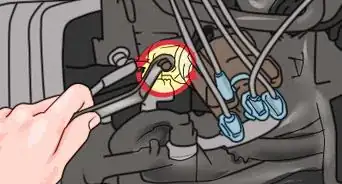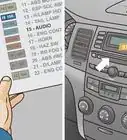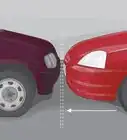This article was co-authored by Duston Maynes. Duston Maynes is an Automotive Repair Specialist at RepairSmith. Duston specializes in leading a team that handles a variety of automotive repairs including replacing spark plugs, front and rear brake pads, fuel pumps, car batteries, alternators, timing belts, and starter motors. Duston holds an Associate’s degree in Automotive/Diesel Technology from The Universal Technical Institute of Arizona and is a Certified Diagnostic Technician and Automobile Mechanics Technician through BMW STEP. RepairSmith received The 2020 Big Innovation Award by Business Intelligence Group and The Startup of the Year by the American Business Awards. RepairSmith was also included in Built in LA’s 50 Startups to Watch and The Business Intelligence Group’s 52 Names Leading the Way in Customer Service. RepairSmith offers in-home services to provide car owners convenient and complete auto repair everywhere.
There are 7 references cited in this article, which can be found at the bottom of the page.
wikiHow marks an article as reader-approved once it receives enough positive feedback. This article has 17 testimonials from our readers, earning it our reader-approved status.
This article has been viewed 2,682,471 times.
If you find yourself in a situation where your key won’t turn in the ignition of your vehicle, there are a number of issues that may be causing the problem. While some of these issues are specific to certain years, makes or models of vehicle, many are fairly universal and can be addressed in your driveway. The issue may be the key, the ignition cylinder, or user error. Narrow down the cause of the issue by attempting a number of methods before having the vehicle towed to a repair facility.
Things You Should Know
- Try pulling the key out slightly before turning it. Sometimes pulling the key out just 1/6 of an inch is enough to get it to turn.
- Alternatively, gently wiggle the key back and forth as you turn it.
- You can also try sliding the key in and out a few times to clear away any debris stuck in the ignition cylinder.
- If your key is bent, use a wooden or rubber mallet to hammer it until it's straight again.
Steps
Resolving Issues with the Key
-
1Pull the key out slightly before turning it. If the key is beginning to wear, you may still be able to engage the pins needed to start the vehicle by inserting the key all the way, then pulling it back out slightly. Try to pull the key back out 1/16 of an inch, or approximately the width of a nickel, then attempt to turn it again.[1]
- If this works, the key is likely over worn.
- You should still replace the key as soon as you can before it stops working.
-
2Wiggle the key back and forth as you turn it. If pulling the key out a bit fails to make the key turn, try wiggling it up and down slightly to engage the pins in the ignition. Be careful not to apply too much pressure. Wiggling the key can make the key contact the pins from a different angle, which may allow you start the vehicle.
- If wiggling the key works, it means the teeth on the key are too worn to properly engage the pins.
- Replace the key as soon as possible if this works before the key stops working entirely.
Advertisement -
3Flatten a bent key using a wooden or rubber mallet. If the key is bent, it may make it impossible to insert it completely or turn the ignition cylinder. Lay the key down on a flat, sturdy surface like a strong table. Take a heavy rubber or wooden mallet and strike the key from above to flatten it against the table.
- You may have to strike the key multiple times in order to flatten it entirely.
- Avoid using pliers or a vice to straighten the key, as you may bend it too far in the opposite direction and reduce the strength of the key.
-
4Gently slide the key in and out a number of times. If there was any debris stuck to the key when you inserted it, it may have gotten caught in the pins of the ignition cylinder. Insert the key completely, then slide it back out. Repeat the process a few times to try to move any debris that may be caught in the cylinder.
- If this works, the issue will likely continue to occur until the debris is cleaned out from the ignition cylinder.
-
5Have a new key cut to the original numbers. If the key is too damaged to work, you will not be able to have it copied. A copy of a worn or damaged key will also fail to start the vehicle. Instead, you will need to have a new key cut by a dealership that services your make and model vehicle. Depending on the vehicle, the dealership may be able to produce a new key using your vehicle’s VIN number.[2]
- You will need to provide sufficient evidence of ownership of the vehicle.
- If a new key cannot be produced, you will need to purchase a new ignition module with matching key and have it installed.
Checking for Common Issues
-
1Ensure the vehicle is in park. Vehicles equipped with an automatic transmission are designed not to start if the transmission is not in park or neutral.[3] Starting a car while in drive could result in the vehicle lurching forward, causing damage or injuring someone. Check your shift lever to ensure it is completely in park or neutral, then attempt to turn the key again. [4]
- Be sure the indicator on the shift lever is pointing at the “P” for park.
- Try taking the vehicle out of park and putting it back in if you can, then turn the key again.
- Also, some vehicle won't start unless you have your foot on the brake.[5]
-
2Inspect the key for damage. If your key won’t turn when you insert it into the ignition, it may be because the key has been damaged and no longer engages the correct pins to the depth necessary to spin the cylinder. Examine the key for signs of excessive wear, rounding or broken teeth. Any of these could result in the key failing to turn in the ignition.[6]
- If the key is damaged, it will have to be replaced.
- Some keys require programming from the dealership when replaced. Refer to your owner’s manual to check the requirements for your vehicle.
- Double-check to be sure you're using the right key, as well.[7]
-
3Ensure there is nothing stuck to the key. Just as worn or damaged teeth can prevent the key from turning, anything stuck to the key will also cause it to improperly engage the pins in the ignition cylinder. If you used your key to open a package recently, for instance, there may be bits of tape stuck to the teeth of the key, preventing it from working.[8]
- Clean any debris or dirt off of the key, then re-insert it and try again.
- Do not use your keys to open packages or do anything else other than start your vehicle.
-
4Check to see if the steering wheel is locked. If you were applying any pressure to the steering wheel when you turned the car off, it may have locked the wheel in place with the steering pin. Check to see if your steering wheel is locked by trying to turn the wheel. If it will not move, or moves only very slightly, it is likely locked. A locked steering wheel will not allow the ignition to engage.[9] [10]
- When you move the wheel back and forth, you will feel it stop abruptly as it comes into contact with the steering wheel lock.
- If your wheel was turned slightly without you applying any pressure when you turned the car off, it still may engage the steering wheel lock.
-
5Wiggle the wheel back and forth while turning the key. In order to unlock the steering wheel, insert the key into the ignition and attempt to turn it. While applying light pressure to the key, wiggle the steering wheel back and forth until the lock disengages. This will allow the steering wheel and the key to turn.[11] [12]
- The key will be able to turn freely in the ignition once the steering wheel is unlocked.
- If the key still fails to turn after the wheel is unlocked, there is another issue.
Addressing Issues with the Ignition Cylinder
-
1Use canned air to clean the ignition port. If there is any debris caught in the ignition cylinder, it may cause the key to fail to engage the pins properly to turn. Purchase canned air from a local retail or office supply store and insert the straw from the nozzle directly into the key hole. Spray the canned air into the key hole in short spurts. It should only take a few short sprays to clean out any debris.[13]
- Do not spray the entire can into the key hole. The extreme cold could result in damage to the ignition cylinder.
- Wear eye protection when using canned air to clean the key hole to ensure no debris gets into your eyes.
-
2Use a small dose of electrical cleaner in the key hole. If the ignition cylinder has seized, spraying a small amount of electrical cleaner into the key hole may lubricate it enough to turn. Be careful not to spray too much into the key hole. A few short squirts should suffice. Once done, insert the key and turn it back and forth gently to work the lubricant in.[14]
- If this works, you may need to replace the ignition cylinder soon as it gets progressively worse.
-
3Have the ignition cylinder replaced. If all else fails, you will need to have your ignition cylinder replaced. Have your vehicle towed to a nearby repair facility that specializes in your make and model of vehicle. Explain the issue and discuss your options.[15]
- Just like having a new key cut, you will need to demonstrate sufficient ownership of the vehicle in order to have a new ignition cylinder installed.
- A new ignition cylinder will likely require replacing your key, even if it wasn’t the issue.
Community Q&A
-
QuestionWhat causes a key not to turn in the ignition?
 Duston MaynesDuston Maynes is an Automotive Repair Specialist at RepairSmith. Duston specializes in leading a team that handles a variety of automotive repairs including replacing spark plugs, front and rear brake pads, fuel pumps, car batteries, alternators, timing belts, and starter motors. Duston holds an Associate’s degree in Automotive/Diesel Technology from The Universal Technical Institute of Arizona and is a Certified Diagnostic Technician and Automobile Mechanics Technician through BMW STEP. RepairSmith received The 2020 Big Innovation Award by Business Intelligence Group and The Startup of the Year by the American Business Awards. RepairSmith was also included in Built in LA’s 50 Startups to Watch and The Business Intelligence Group’s 52 Names Leading the Way in Customer Service. RepairSmith offers in-home services to provide car owners convenient and complete auto repair everywhere.
Duston MaynesDuston Maynes is an Automotive Repair Specialist at RepairSmith. Duston specializes in leading a team that handles a variety of automotive repairs including replacing spark plugs, front and rear brake pads, fuel pumps, car batteries, alternators, timing belts, and starter motors. Duston holds an Associate’s degree in Automotive/Diesel Technology from The Universal Technical Institute of Arizona and is a Certified Diagnostic Technician and Automobile Mechanics Technician through BMW STEP. RepairSmith received The 2020 Big Innovation Award by Business Intelligence Group and The Startup of the Year by the American Business Awards. RepairSmith was also included in Built in LA’s 50 Startups to Watch and The Business Intelligence Group’s 52 Names Leading the Way in Customer Service. RepairSmith offers in-home services to provide car owners convenient and complete auto repair everywhere.
Automotive Repair Specialist The key might be incorrect, the key tumbler might be binding, or the vehicle might not be in park. Sometimes, the parking lock has pressure for steering—shaking your steering wheel while trying to turn the key at the same time can free it up.
The key might be incorrect, the key tumbler might be binding, or the vehicle might not be in park. Sometimes, the parking lock has pressure for steering—shaking your steering wheel while trying to turn the key at the same time can free it up. -
QuestionDo 2005 Honda Accords have a key hole on the passenger side?
 Community AnswerYes, 2005 Accords have a key hole on the passenger side.
Community AnswerYes, 2005 Accords have a key hole on the passenger side. -
QuestionHow do I get my key out of the ignition if it's stuck?
 Community AnswerUnderneath the key cylinder there may be a button to press to release the key or a small hole where a screwdriver or smaller tool can fit inside and push upwards to release the key.
Community AnswerUnderneath the key cylinder there may be a button to press to release the key or a small hole where a screwdriver or smaller tool can fit inside and push upwards to release the key.
Warning
- The information in this article is intended to provide general answers for frequently asked questions about this topic, and may not be applicable to all vehicles. Please refer to your vehicle’s owner’s manual for details about maintenance intervals and other vehicle specifications. If you are unsure about your ability to perform any repair, we recommend contacting a certified automotive technician to perform the necessary work.
References
- ↑ http://www.fordproblems.com/trends/key-stuck-ignition/
- ↑ http://www.theaa.com/motoring_advice/security/keys.html
- ↑ Duston Maynes. Automotive Repair Specialist. Expert Interview. 10 June 2021.
- ↑ http://www.fordproblems.com/trends/key-stuck-ignition/
- ↑ Duston Maynes. Automotive Repair Specialist. Expert Interview. 10 June 2021.
- ↑ https://freecourseweb.com/how-to-fix-an-ignition-key-that-wont-turn/
- ↑ Duston Maynes. Automotive Repair Specialist. Expert Interview. 11 June 2021.
- ↑ https://freecourseweb.com/how-to-fix-an-ignition-key-that-wont-turn/
- ↑ Duston Maynes. Automotive Repair Specialist. Expert Interview. 10 June 2021.
- ↑ http://www.popularmechanics.com/cars/how-to/a2649/4252619/
- ↑ Duston Maynes. Automotive Repair Specialist. Expert Interview. 10 June 2021.
- ↑ http://www.popularmechanics.com/cars/how-to/a2649/4252619/
- ↑ http://carunderstanding.com/how-to-unlock-steering-wheel/#tab-con-8
- ↑ http://carunderstanding.com/how-to-unlock-steering-wheel/#tab-con-8
- ↑ http://www.theaa.com/motoring_advice/security/keys.html
About This Article
If your car key isn’t turning in the ignition, first check to make sure your vehicle is in park. If it is, check the key for damage. If the key is warped, worn, or cracked, it may not work correctly. For a worn key, try pulling the key back slightly as you turn it or gently wiggling it back and forth in the ignition. Eventually, you’ll need to replace the key. For bent keys, you may be able to fix the problem by gently pounding the key flat with a rubber mallet. Dirt or debris on the key may also prevent it from turning, so clean the key if you notice anything sticking to it. If there’s nothing wrong with the key, try turning the steering wheel to check if it’s locked. If so, you can unlock it by wiggling the wheel back and forth while turning the key in the ignition. Sometimes a key won’t work right if there’s something wrong with the ignition port itself. Spray compressed air into the port to clear out dust and debris. You can also try spraying in a little electrical cleaner to lubricate the keyhole. If that doesn’t work, you may need to get the ignition cylinder replaced. Read on to learn how to clean the ignition port in your vehicle!

